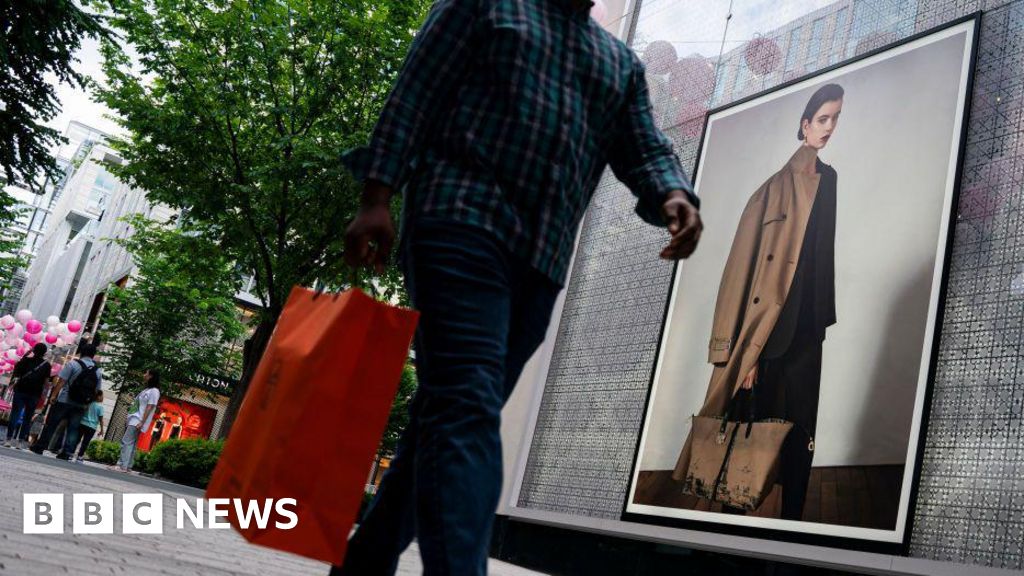Countries around the world are changing tack after pushing up borrowing costs sharply in recent years to quell soaring prices.
The European Central Bank (ECB) announced its first interest rate cut in five years on Thursday, with the main lending rate falling from a record high of 4% to 3.75%.
Canada took similar steps just a day after Sweden, Switzerland, Brazil and Mexico, among other countries, have taken a series of similar measures in recent months.
Borrowing costs in Britain and the United States are now at their highest levels in years and officials are expected to delay any cuts at a meeting this month.
But with many analysts expecting action in late summer or early fall, it’s only a matter of time before that action is sustained.
It’s a sign that the global fight against inflation sparked by the pandemic is entering a new phase, with some of the largest and worst-affected economies raising hopes that price inflation will eventually be brought under control.
“This is an important move,” said Brian Coulton, chief economist at Fitch Ratings. “We are entering another phase.”
Just a few years ago, central banks around the world were raising interest rates sharply in the hope that rising borrowing costs would put pressure on the economy and ease the pressure on rising prices.
The measures are unusually synchronized in response to global supply chain issues and shocks in food and energy markets that have led to sharp increases in global prices.
This coordination has weakened over the past year and has become more variable.
In Europe, Britain and the United States – economies that haven’t experienced inflation problems in decades – officials have been on hold, keeping interest rates at multi-decade highs.
Emma Wall, head of investment research and analysis at Hargreaves Lansdown, said the ECB’s decision was a declaration of confidence that trends were moving in the right direction.
“What the central bank is saying today is that while inflation may not plummet, they are confident they can get it back to their 2 per cent target,” she said.
In Europe, inflation is currently at 2.6%, while in the UK it has fallen to 2.3%, well below its peak of more than 11% in late 2022.
In the United States, the personal consumption expenditures index, the Fed’s preferred inflation gauge, has fallen to 2.7%.
Still, the Fed, which has taken the lead in raising rates, took cautious action, reflecting concerns that progress on the issue may have stalled and that stronger-than-expected economic growth and major government spending could derail the problem. More difficult to solve.
“The eurozone economy is in a different position than the U.S. economy,” said Yael Selfin, chief economist at KPMG.
Many forecasters are currently predicting at least one, if not more, interest rate cuts in the United States, Europe and the United Kingdom this year, with more to come in 2025.
Such measures would provide relief to businesses and households seeking to borrow.
But analysts say the path for rates to fall is likely to be slower and more stagnant than their rise.
If central banks raise interest rates too quickly, they risk triggering a wave of economic activity that could cause prices to rise again.
Move too slowly and rising borrowing costs could lead to a deeper recession.
Mark Wall, chief economist at Deutsche Bank, noted that when announcing a rate cut on Thursday, the ECB was careful to avoid committing to future action.
“Arguably, the statement provides less guidance than expected on what happens next,” he said. “This is not a central bank that is in a hurry to ease policy.”
Joseph Gagnon, a senior fellow at the Peterson Institute for International Economics, said that in Europe, the factors that kept interest rates low before the outbreak, including slower growth and an aging population, could re-emerge, eventually bringing rates back closer to Zero level.
But he said the U.S. was unlikely to return to the ultra-low borrowing costs that prevailed in the decade after the financial crisis, in part because large budget deficits could put upward pressure on interest rates.
“We’re going to be cutting rates a little slower than Europe, but I think when this is all over we’re going to end up with higher rates as well,” he said.

